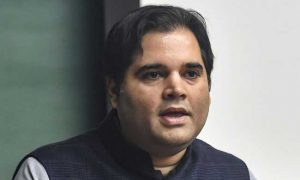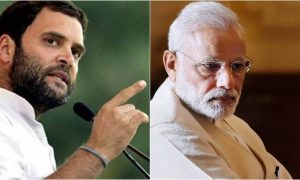It was a year to this day that the hills of Darjeeling and Kalimpong districts, emerging from a lock-down of more than a hundred days, began the long trudge up and down the slippery slopes to a normality that now settled down well, the rhythm of life restored after a phase of protracted political turbulence. Yet, like the last of the monsoon clouds looming over the region, there hang questions over the principle of local governance.
And there is more. What does not elude the eye – or, for that matter, the collective memory – is that even after a year the assurance by the Centre of tripartite talks involving the sides concerned to discuss all relevant issues that had precipitated the 104-day June-September 2017 strike is yet to materialise. It was a commitment then made by Union home minister Rajnath Singh of setting the table for discussions within a fortnight which had prompted the sponsors of the agitation for a separate Gorkhaland state to call off the stir. The fate of the promised meeting is still up in the air.
In the intervening months the statehood demand has been stripped off the local political discourse, though it still appears to cause a certain level of unease within the ruling political dispensation comprising a leadership which once swore by it. And while it remains to be the elephant in the room, the issue consigned to deep freeze, there has emerged yet another question confronting the authorities – that revolving around whether or not there is some sort of a democratic-deficit in governance.
For a region that for more than three decades has been invested with a semi-autonomous governing apparatus, the fact that elections to the Gorkhaland Territorial Administration (GTA), due for more than a year, have not yet been held and that the Board of Administrators (BOA) of the body, propped up to the seat of power by Mamata Banerjee’s government this month last year, had only recently had its tenure extended by a further six months, only accentuates this perceived deficit.
Such a situation has led sections within the local political class to squirm. Only last week, BOA chairman, Binay Tamang, well aware of the criticism emanating from beyond the circles of his political detractors had, for the first time, come out in the open last week claiming that he has urged the state government to hold GTA elections by the year-end. There were also numerous comments in social media regarding the extension, he reportedly admitted. After all, the nominated setup is yet to be endorsed through a public mandate.
What is clearly at stake here is the very legitimacy of the BOA as an entity representative of the people. It lacks the agency that an elected body enjoys. Interestingly, Tamang’s remarks were followed up with support to his proposal by the core committee of that faction of the Gorkha Janmukti Morcha (GJM) which he leads and which would like to cash in while the going is good on what is being perceived its growing popularity. The ball is now in Banerjee’s court.
These developments should be viewed in the context of the power struggle between Tamang and fugitive leader Bimal Gurung within the GJM which continues to remain the dominant political force in the hills. Gurung, even in absentia, seeks to make his presence felt through the occasional audio clip and statement issued from his hide-out which could be more than one, and who cites intelligence sources to claim that he still enjoys 70 percent of hoi polloi’s support. And there is the faction led by Tamang to which much of the party’s erstwhile leadership owes allegiance and which is anxious to prove not merely its counterclaim of being the true face of the party in any future electoral contest but also to discount criticism that it owes its ascendancy to the very state administration which was the GJM’s target in the statehood campaign.
Behind this tussle in which the odds are presently stacked heavily against Gurung is the proxy confrontation that rages between the BJP and forces arrayed behind Banerjee that is bound to intensify in the run-up to next year’s Lok Sabha polls. New power centres in the form of development boards for different castes and tribes and committees to work in tandem with the GTA have been set up. But these too, it can be argued, lack agency in the wider public sphere. They all owe their existence to Banerjee who, after a lapse of eight months, has resumed her occasional visits to the hills – meticulously choreographed events designed to demonstrate that she has the entire local political leadership sans Gurung loyalists on board.
Yet, in the first anniversary of the watershed moment that re-painted quite dramatically the political landscape of the region, there persists a sense of bewilderment over how Gurung, bent on staging a comeback, has successfully eluded the law all these months. This despite the raft of charges against him including those under the Unlawful Activities (Prevention) Act and the Supreme Court, six months ago, dismissing a plea for his protection from arrest. Is it because of the patronage of the BJP which might need his support to retain the Darjeeling Lok Sabha seat for the third successive term in the polls next year? Or is it that the state administration is quite content with the current status quo, conscious that any move to apprehend him would make a martyr of him and consequently upset the applecart.
There shall no more be strikes, Tamang has assured. Calm has certainly returned to the hills which brace for the coming tourist season. But underlying it all swirl questions of the political future of the region as it negotiates the roadblocks ahead.
For more updates: Like us on Facebook and follow us on Twitter & Instagram




































